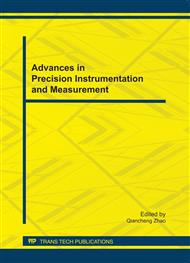p.513
p.518
p.525
p.531
p.536
p.541
p.545
p.550
p.556
Research and Development of Electric Control System of Friction Coefficient Test Vehicle for Airport Runway
Abstract:
This paper introduces a friction coefficient test vehicle for airport runway, which consists of the hydraulic system, mechanical system and electric control system. The electric control system uses the host computer - the slave computer joint control way and is the main control unit of the test system. It can implement data acquisition and transmission and control the action of mechanical and hydraulic systems so as to complete the friction coefficient measurements. The host computer is an industrial personal computer and the slave computer is a PLC. The hardware system has the strong control and anti-interference ability. In addition, the software filter is used so as to improve the accuracy of the data. The experimental results show that the friction coefficient test vehicle has reliable performance, high precision and good reproducibility, so it can complete automatically the continuous measurement of airport runway friction coefficient.
Info:
Periodical:
Pages:
536-540
Citation:
Online since:
September 2011
Authors:
Price:
Сopyright:
© 2012 Trans Tech Publications Ltd. All Rights Reserved
Share:
Citation:


